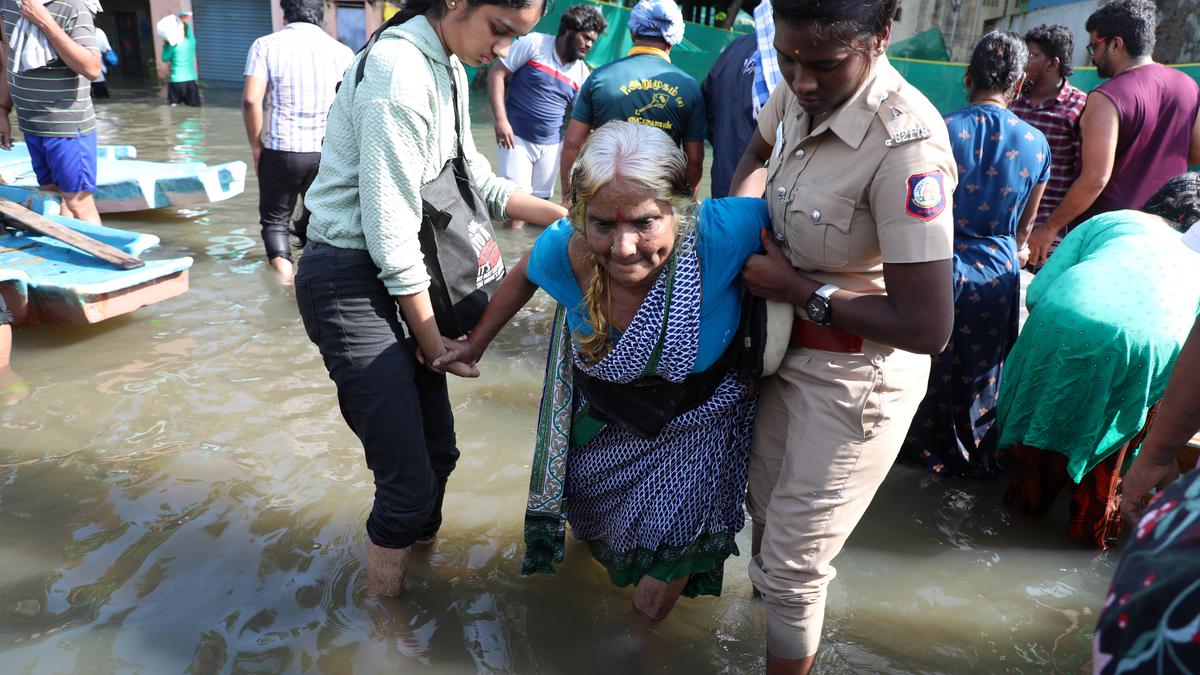
Chennai’s residents turn volunteers in the aftermath of Cyclone Michaung
The Hindu
In Chennai, volunteers have come together to help people and their pets in the aftermath of Cyclone Michaung. Shravan Krishnan coordinated efforts with ROA shelter, while Pauline David prepared hot meals for those displaced. Ashwath Ram connected those in need with authorities, and @Srinimaama16 coordinated resources. Dramatic moments, like rescuing a pregnant woman, have been experienced. Volunteers continue to help the city back on its feet.
Two days after Cyclone Michaung unleased its fury on the city, Rajasekaran Natrajan found himself wading through Madipakkam’s waterlogged streets as their house was yet to have its water and power supply restored.
“My son who is on the autism spectrum could not step into the water, and I was being dissuaded by rescuers not to take my pet dog along. It was then that a large jeep passed, and the driver asked if I needed assistance,” he said. Shravan Krishnan, an animal rights activist, who was at the wheel, was happy to help. Rajasekaran says he could not believe his luck..
Armed with kayaks and a boat, animal rescuers in the city came together in the aftermath for rescues — both of people and their furry companions. Shravan Krishnan, who helps run the Besant Memorial Animal Dispensary, coordinated efforts with ROA shelter by Dinesh Baba in Madipakkam, Velachery, Thoraipakkam and Pallikaranai, efforts towards which have been in place for the last few years.
“Once every month, we’ve been heading to Muttukadu to practice Kayaking. We also invested in a good boat and a pump to be used in case the need arises,” says Shravan.
Chennai is no stranger to this streak of resilience in times of crisis — thousands of volunteers stepped up in the aftermath of the 2015 floods and played an important role in helping the city back on its feet. In keeping with this spirit, volunteers across Chennai have been working round the clock this year as well, alongside government and civic bodies, to help navigate life after the destruction on December 4.
Take for instance Perambur’s Pauline David who runs Solomon Trust. Despite her own locality being waterlogged, she swung into action. She borrowed large vessels from her sister who runs a small food stall began preparing hot meals for people who were displaced from their homes. “While people do need help in the coming months, whoever is hungry today also needs to be fed,” she says, matter-of-factly.
Pauline is still busy coordinating with volunteers and locals from different areas about their food requirements. “We have to send out between 70 and 80 meals today. We also carry packets of bread and milk in case there are more residents who need food,” she says.

Hampi, the UNESCO-recognised historical site, was the capital of the Vijayanagara empire from 1336 to 1565. Foreign travellers from Persia, Europe and other parts of the world have chronicled the wealth of the place and the unique cultural mores of this kingdom built on the banks of the Tungabhadra river. There are fine descriptions to be found of its temples, farms, markets and trading links, remnants of which one can see in the ruins now. The Literature, architecture of this era continue inspire awe.

Unfurling the zine handed to us at the start of the walk, we use brightly-coloured markers to draw squiggly cables across the page, starting from a sepia-toned vintage photograph of the telegraph office. Iz, who goes by the pronouns they/them, explains, “This building is still standing, though it shut down in 2013,” they say, pointing out that telegraphy, which started in Bengaluru in 1854, was an instrument of colonial power and control. “The British colonised lands via telegraph cables, something known as the All Red Line.”









